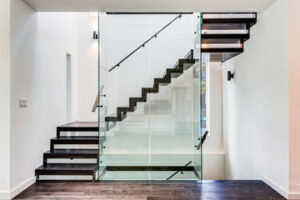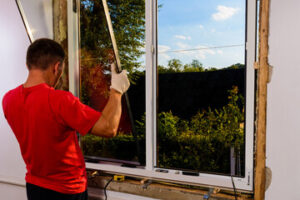Glass Governor Of Atlanta tabletops, shelves, and art pieces can elevate a home’s aesthetic and add to its value. But what does it take to create these unique decor elements?

The process begins with a design consultation where your product vision is discussed and understood. Then, high-quality glass is chosen based on its design and functionality.
There’s nothing that elevates a space like a beautiful glass surface. With the right design and materials, custom pieces can make a big impact on the look and feel of any room. Whether you’re looking to add some privacy, create a specific aesthetic or simply enhance your home’s curb appeal, custom glass can be the perfect solution.
The first step in creating a custom glass piece is designing the project with a professional. During this consultation, your needs, preferences and ideas are discussed and refined to ensure the final product aligns with your vision.
After the design is agreed upon, the next step is choosing the glass type and frame material. This will be based on the design specifications and any additional features requested. The fabricator will then begin crafting the glass to the exact dimensions and specifications of the approved design.
This can be a tedious process, especially when working with large sheets of glass. Modern fabrication plants have a range of equipment to help speed up the process and provide the highest level of precision. These tools include Computer Numerical Control (CNC) and water-jet cutting machines. These machines can accurately cut and shape the glass, making it ready for the installation process.
Glass fabrication also requires a tempering oven to heat the glass and quickly cool it, which helps make the glass stronger. Fabricators need a high-quality, efficient tempering system to produce accurate, consistent results and keep up with production demands.
Once the glass has been shaped, it is then etched and finished to achieve the desired aesthetic. This can be achieved through etching, engraving, coating or other additions. The finishing touches are what can really make the difference between a good and great glass product.
During this time, your glass professional will also work with you to decide on a timeline and payment schedule for the project. Once all the details have been finalized, the contract will be drawn up and fabrication of the windows can begin. This will be based on the exact specifications of the approved design and adhering to the highest quality standards.
Materials
One of the best ways to increase your home’s value is by adding custom glass. This can be a large scale project that adds a focal point to your home, or something more subtle like a door to the patio. Regardless of what type of glass you choose for your house, it’s important that you choose the right materials for the job. This means working with a company that offers a wide range of options and has on-site product showrooms so you can see the quality of their work for yourself.
The right glass company will have a wide variety of materials to suit your needs, from standard window glass to laminated safety glass. They’ll also have the equipment to cut these materials into any shape or size you need. They’ll double-check all measurements before they begin working on your project, and will ensure that the finished piece is up to code.
Some common glass types include annealed glass, which is often used in picture frames and other light applications. This type of glass does not shatter into small pieces, and will instead crack into large shards if broken. Laminated glass, on the other hand, is safer and more durable than annealed glass. It has been heat-treated and bonded with a strong adhesive, making it more resistant to damage.
Another type of glass is tempered glass, which is used in shower doors and other areas where higher safety standards are required. This type of glass is heated to extreme temperatures, which makes it stronger than regular glass and harder to break. It is also treated with an acid wash to create a surface that is easier to clean and more resistant to scratching.
Other specialty glass includes clear float, patterned, frosted and coated glass, as well as mirrors. These can be used in a variety of applications, such as partitions, office furniture and interior design. They provide privacy and allow natural light to pass through, while still allowing you to see out of the space.
Other special glass includes mirrors with a sandblasted finish, which is more reflective and less glare-prone. Rounded corners are also available, which can be especially useful for safety reasons.
Cutting
Cutting glass into the desired shapes is a vital step in any project. The precise cutting process ensures that the finished product aligns with your design specifications and enhances the aesthetic of your space. It also reduces material waste and allows for easier handling. The most common cutting methods include manual sanding and the use of automated tables with carbide cutting wheels.
A successful cut begins with a clean surface and precise markings. In addition, the scoring wheel must be free from any obstructions that might weaken the fissure produced by the traversal of the tool across the surface. This is especially critical when cutting thicker glass types.
When using a hand-held cutter, apply consistent pressure to the glass along the score line. Inconsistent pressure can result in uneven breaks, which can be difficult to correct. Also, be sure to dip the cutting wheel in oil before use to minimize friction and improve its performance.
A professional cutting machine can help speed up the process and provide more accuracy in complex designs. However, the use of these machines can be costly, requiring specialized machinery and training costs. Furthermore, they can be limited to certain types and thicknesses of glass due to their size and weight.
After a smooth and precise cut, the edges of the glass should be sanded to remove sharpness and render the piece safe for handling. The process can be automated for more consistency and ease. In addition, sanded edges are less likely to chip, reducing the risk of injury.
A glass edging machine can further smooth and finish the edges of a piece, enhancing its appearance. This process can be customized to fit your needs, with options including a safety seam, beveling, and flat polishing. The safety seam involves sanding the sharp portions of the edge to make it safe for handling, while beveling and flat polishing create an elegant finish with a 45-degree angle chamfer on both sides of the glass. In addition, the edging machine can add a variety of other decorative touches to the glass, such as a frosty satin or matte finish.
Customization
Custom glass is a great way to enhance your home and increase its value. The process involves designing a custom piece and selecting the materials that are best suited to your space. The design team will also select the glass type, frame material, color, texture, hardware, and additional features like tinting. Once the design is complete, it will be presented for review and approval. This is the perfect time to ask for any changes or modifications that you may want to make.
Adding customized glass is a wonderful way to update your kitchen, bathroom, or living room. It will give your home a unique look that will set it apart from other homes in the area and attract buyers. This is a great investment that will pay off in the long run.
Once the custom glass is designed, the next step is to cut the glass. This is a complicated process that requires skill and precision. It is important to choose a glass manufacturer that can cut the glass with the highest quality standards. The company should have years of experience in the industry and will be able to provide a wide range of different types of glasses.
Glass companies that offer virtual showrooms are a great way to jumpstart the design consultation process with guidance from an expert. They can provide you with access to their catalog of existing designs and allow you to make note of those that you like. They will also be able to tell you how much the custom glass would cost and what it would be made from.
After the initial design is completed, a sample mold will be created. This will be used to create a prototype of your custom glass product. This step will help you visualize your glass project and ensure that it is a good fit for your company’s needs.
Custom glass is a great way to enhance any home or business. It offers a variety of design options, including etching and coating, which can be added to standard glass products to add a unique touch. It is also a great option for businesses that need custom glass components and bottles for their products.



